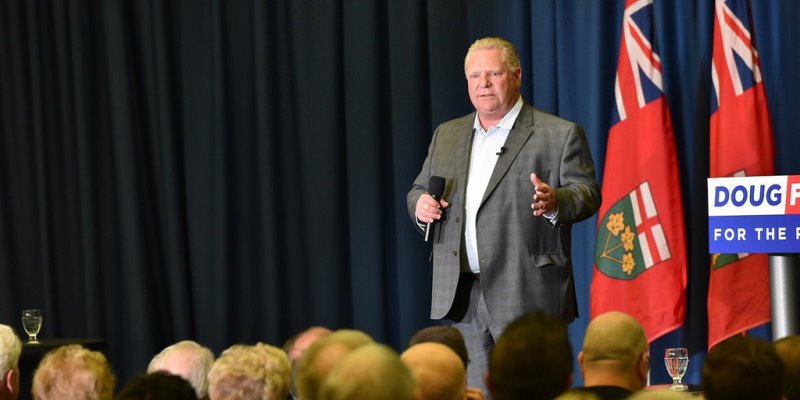How to start cleaning up Ontario's finances—fast

As Ontario’s new government takes charge, public attention has focused on the moves made on education and the management of Hydro One. However, the most important task remains outstanding—dealing with the province’s public finances.
The Ford government took a first step by tapping former B.C. premier Gordon Campbell to lead an inquiry into Ontario’s finances, which should be handled in systematic fashion due to their importance to business-sector confidence and the sustainability of important long-term government programs in health, education and the renewal of provincial infrastructure. Yet, the parameters of the task remain uncertain.
Consider this. The 2018 provincial budget projected revenues of $152.5 billion and expenditures of $159.2 billion, for a deficit of $6.7 billion, accompanied by an estimated provincial net debt of $325 billion for 2018-19—approximately 40 per cent of the province’s GDP—with debt-interest costs of nearly $12 billion annually (or $1 billion per month).
Yet, according to the recent auditor general report, the deficit is actually larger, at $11.7 billion, due to the government’s accounting treatment of pensions and the financial impact of its electricity rate reduction. And the Financial Accountability Office of Ontario (FAO) projects a deficit of $12 billion due to higher spending and weak revenue growth. As a result, net debt figures may also be higher than expected with net debt possibly reaching $394 billion by 2020-21, according to the FAO.
On the other side of the ledger, total expenditures grew from $128.9 billion to $149.5 billion between 2014-15 and 2017-18—an increase of 16 per cent—followed by a proposed spending increase of more than six per cent for 2018-19. Given that spending has been increasing at well above the combined rates of population growth and inflation, there’s should be room for restraint on the expenditure side.
The economic picture is also uncertain. Ontario’s economy has improved since 2014 with economic growth the best it’s been in nearly a decade (though much of growth is due to the hot housing sector). This has resulted in revenue growth forecasts that may be too rosy. The 2018 budget sees total provincial government revenues from 2017-18 to 2024-25 growing at an annual average rate of approximately 3.5 per cent. Yet Ontario’s economy is very dependent on trade with the United States and the impact of the current tariff war may be substantial, especially if it affects the auto industry. Moreover, there’s the prospect of the provincial economy approaching the tail end of the business cycle, which would affect revenues even without a trade war.
Tariffs may also raise consumer prices, generating inflation. The Bank of Canada is already in the process of slowly raising interest rates to “normal levels,” but any burst of inflation that takes the economy out of the Bank’s inflation targets will likely trigger a more concerted increase in interest rates. While the Ontario government has shifted debt to long-term bonds to protect against interest rate increases, the impact of rising interest rates on the economy could further complicate the efforts of the provincial government to balance the books.
So the tasks at hand for the new government at Queen’s Park are clear. First, ascertain the actual fiscal parameters of the situation. What is the actual provincial government deficit and net debt? Second, take steps to address the deficit. Reducing the projected 6 per cent increase in spending for 2018-19 to 2 per cent would essentially balance the budget. After that, keeping expenditure increases to the combined rate of population growth and inflation—given that increases since 2014-15 have been nearly double that rate—should keep expenditures in line with revenues.
Ontario should get cracking. In the world of compound interest, time is money.
Author:
Subscribe to the Fraser Institute
Get the latest news from the Fraser Institute on the latest research studies, news and events.

